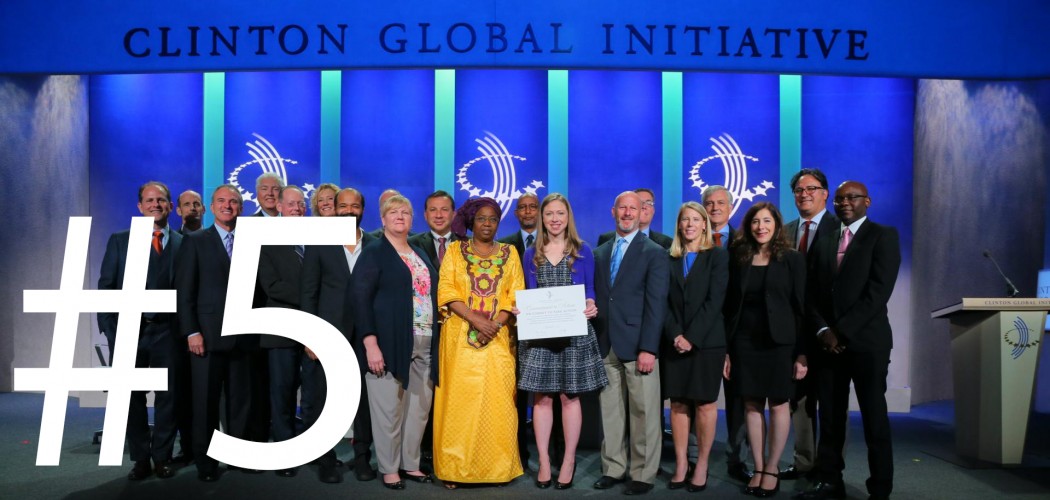There’s a lot to consider, with the Benghazi investigation, which is what the Clintons’ are trying to distract everyone from taking too seriously. Here’s some background:
When Hillary Clinton appears Thursday before the House committee investigating an attack on a U.S. diplomatic compound in Benghazi, Libya, the hearings will be the biggest show in town. Her testimony will grab domestic headlines and likely make news around the world, as well. But the platform for this upcoming discussion — the congressional hearing — will be a venue whose best days may have come in the past. Hearings once had extraordinary influence, especially in the years after World War II. In today’s era of bitter partisanship and an ever-more fragmented media environment, hearings have lost their luster, and we need to revise their role in public debates in order to make them relevant again.
(the story continues with a retrospective on the use of these kinds of investigations and continues with this recommendation — read the whole story in our US In-Depth coverage)
This week, the majority Republicans ought to take the first steps at bipartisanship, as Ervin did 40 years ago. Republicans should use the gavel fairly and not wield it in an attempt to silence opposing points of view. The burden should not fall exclusively on the Republicans, though. Questions of mishandling of classified material and protecting U.S. officials stationed abroad are important issues that Congress has a duty to examine. For their part, Democrats should ask serious questions, and not just try to defend Clinton, the front-runner for their presidential nomination. Instead, they should work with the GOP to try to get to the heart of the matters being raised. It may sound like a pipe dream in these hyperpartisan times, but the potential for greater dialogue and more transparent exchanges also brings a greater opportunity to improve both the quality and the public appetite for modern hearings.
I bring it to your attention partly to highlight how useless and partisan these hearings can be and partly to demonstrate what we’ll analyze below, how the Clinton’s are working overtime to make sure there’s good press this week for Hillary.
*************************************************
On August 13, 2013, The New York Time ran “Unease at Clinton Foundation Over Finances and Ambitions” a tough review of the charity. Claiming among other things that it was poorly run, essentially a network of people getting and giving personal favors. This bad management meant the foundations longevity was in jeopardy. So in this 2013 story, it is announced that Hillary is taking over for Bill, the name of the foundation is changed to include hers and their daughter’s Chelsea and that she’s making big changes. The story in the Times this week is a glowing review of how Hillary and Chelsea have turned around the foundation and have it on a path for long-term success. This is no coincidence. We have an inside source who explained to us that the first story was planted in 2013, way in advance of any campaign announcement, and with plenty of time to work out there errors the foundation had made. The NYT story this week was the followup, the glowing review, planted this week to promote Hillary as a leader, as competent and to deflect from the Benghazi hearings. The placement, timing and strategy of these two stories gives us a great insight into how far in advance the Clintons’ plan, how they’re willing to publicly fail if it’s part of a larger strategy to show how they can turn things around an succeed and how they use the media to control the messaging. Here are excepts from both stories.
“Unease at Clinton Foundation Over Finances and Ambitions”
The review echoed criticism of Mr. Clinton’s early years in the White House: For all of its successes, the Clinton Foundation had become a sprawling concern, supervised by a rotating board of old Clinton hands, vulnerable to distraction and threatened by conflicts of interest. It ran multimillion-dollar deficits for several years, despite vast amounts of money flowing in.
And concern was rising inside and outside the organization about Douglas J. Band, a onetime personal assistant to Mr. Clinton who had started a lucrative corporate consulting firm — which Mr. Clinton joined as a paid adviser — while overseeing the Clinton Global Initiative, the foundation’s glitzy annual gathering of chief executives, heads of state, and celebrities.
This fall, Mrs. Clinton and her staff will move into offices at the foundation’s new headquarters in Midtown Manhattan, occupying two floors of the Time-Life Building. Amid speculation about her 2016 plans, Mrs. Clinton is adding major new initiatives on women, children and jobs to what has been renamed the Bill, Hillary & Chelsea Clinton Foundation.
Worried that the foundation’s operating revenues depend too heavily on Mr. Clinton’s nonstop fund-raising, the three Clintons are embarking on a drive to raise an endowment of as much as $250 million, with events already scheduled in the Hamptons and London. And after years of relying on Bruce R. Lindsey, the former White House counsel whose friendship with Mr. Clinton stretches back decades, to run the organization while living part-time in Arkansas, the family has hired a New York-based chief executive with a background in management consulting.
“We’re trying to institutionalize the foundation so that it will be here long after the lives of any of us,” Mr. Lindsey said. “That’s our challenge and that is what we are trying to address.”
But the changing of the guard has aggravated long-simmering tensions within the former first family’s inner circle as the foundation tries to juggle the political and philanthropic ambitions of a former president, a potential future president, and their increasingly visible daughter.
And efforts to insulate the foundation from potential conflicts have highlighted just how difficult it can be to disentangle the Clintons’ charity work from Mr. Clinton’s moneymaking ventures and Mrs. Clinton’s political future, according to interviews with more than two dozen former and current foundation employees, donors and advisers to the family. Nearly all of them declined to speak for attribution, citing their unwillingness to alienate the Clinton family.
The New York Times, October 18, 2015: “Rwanda Aid Shows Reach and Limits of Clinton Foundation”
The Clinton Foundation has had two lives. When it was incorporated as the nonprofit William J. Clinton Presidential Foundation in 1997, more than three years before Mr. Clinton left office, its primary mission was to raise $165 million to build his sleek presidential library in Little Rock, Ark.
After the library opened in 2004, the foundation pivoted to an ever-evolving menu of projects, and to the fund-raising needed to support them. By 2013, it had collected $2.1 billion in revenue, tax filings and financial statements show, with significant donations coming from major corporations, foreign individuals and governments like Saudi Arabia, Kuwait, Australia and Norway.
Such gifts are perfectly legal. But never had those donors had such an opportunity to wield theoretical influence over a top cabinet secretary and prospective president by giving unregulated sums to a spouse’s foundation.
The foundation’s programming is subdivided into “initiatives,” “alliances” and “partnerships” aimed at a grab-bag of causes. They include climate change, cooperative farming in Africa, economic growth in Haiti, obesity in the United States, access to lifesaving drugs, youth unemployment, early literacy, women’s advocacy, the reduction of preventable disease, the streamlining of developing markets, sustainable health systems and volunteerism.
Much of the essential work takes place in offices — analyzing data, strategizing with governments, developing proposals, negotiating, publicizing, squeezing value from the Clinton name and burnishing it in the process. The Clintons’ daughter, Chelsea Clinton, a former McKinsey & Company consultant who wields substantial influence as the foundation’s vice chairwoman, stressed measurable outcomes when she joined in 2011, and its publications are thick with data about its reach.
Yet even foundation veterans can have trouble encapsulating the mission. They are conveners, facilitators, implementers, catalysts. “We help transform the world’s approach to problems,” said Amitabh Desai, the foundation’s foreign policy director. “That’s how I synthesize it.”
Perhaps the foundation may best be understood by what it is not. For the most part, it is not a grant-making organization like the Bill & Melinda Gates Foundation. Its primary mission is not to provide direct humanitarian aid, like CARE or Doctors Without Borders.
The Clinton Foundation gets good marks from the group Charity Watch for keeping its overhead and fund-raising costs low. But it spends more than a third of its budget on compensation for roughly 2,200 employees in 30 countries. In some of those places, Rwanda included, it is known for sending bright but inexperienced recent graduates to work as technical advisers to government ministries.
A number of top foundation officials have extensive histories with the Clintons, and the Manhattan headquarters, on two high floors of the Time-Life Building, is not without its rough-and-tumble palace intrigue. In recent years, its coffers have been used to pay top political advisers to Mrs. Clinton like Huma Abedin and Sidney Blumenthal.
Executive salaries can be high, but are not excessive for the field, surveys show. A former chief executive, the longtime Clinton counselor Bruce R. Lindsey, earned $412,581 in total compensation in 2012, his last full year in the job, according to tax returns. He is now the paid chairman, while the new president is Donna E. Shalala, Mr. Clinton’s secretary of health and human services.
Neither Mr. Clinton nor Chelsea Clinton receives a salary, although transportation and expenses are covered when they travel on foundation business. Mrs. Clinton has been in public office for most of the foundation’s life. She joined the board after leaving the State Department in 2013, when the foundation’s name was expanded to include hers and Chelsea’s, but resigned in April when she announced her candidacy for president.
The foundation may be most widely known for its Clinton Global Initiative, the wonky four-day Davos-on-the-Hudson held each September to coincide with the United Nations General Assembly. World leaders travel across town for panel discussions and awards dinners, with the Clintons taking center stage.
But the distinguishing feature is a parade of philanthropic “commitments to action” made by nonprofit organizations, corporations and governments. Some 3,400 pledges have been made over the past decade, including about 160 that involve Rwanda.
The commitments are supposed to be fresh, but many projects clearly would happen anyway, and the foundation does not back them financially. But for a $20,000 membership fee, invitees gain the Clinton imprimatur and a chance to showcase proposals to an audience of possible funders and partners.
At the 2007 meeting, the philanthropist Anne Heyman and her husband, Seth Merrin, committed his company, Liquidnet Holdings, to giving nearly $2 million to help build the Agahozo-Shalom Youth Village in Rwanda for orphans of the genocide and AIDS. Plans for Ms. Heyman’s project were already underway, but the announcement “propelled things forward,” said Danielle S. Burenstein, the project’s executive director.
The tidy hilltop campus of classrooms and group residences in Rwamagana opened in 2008 and now houses 500 teenagers. In addition to academics, it offers extracurricular training in everything from chicken farming to music production.






